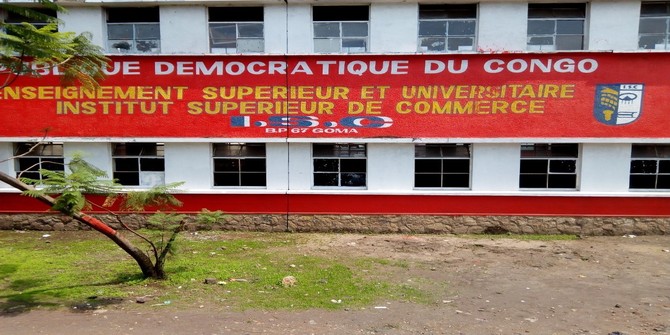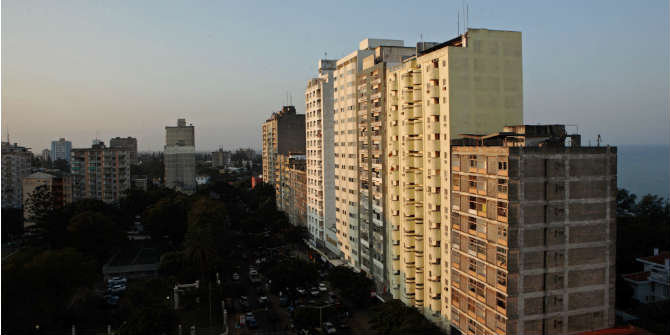Benjamin Chemouni says Why Comrades Go to War is an ambitious book aiming to shed a new light on the causes of the two Congo Wars (1996-1997 and 1998-2003) that led to the overthrowing of Mobutu Sese Seko in May 1997 and resulted, as the title of the book puts it, in Africa’s deadliest conflict.
Roessler and Verhoeven’s book provides an explanations to the causes of the conflicts in two steps. They argue that the First Congo War resulted from an alliance of countries spearheaded by panafricanist liberation movements which included the Rwandan Patriotic Front (RPF), the National Resistance Movement in Uganda, the Eritrean People’s Liberation Front, and Ethiopian People’s Revolutionary Democratic Front, that aimed at liberating Congo from Mobutu. Liberations movements can be understood as organisations that “arose in opposition to the emergen ce of a new class of dictators and authoritarian leaders who their critics conceived as neo-colonial for perpetuating policies of social exclusion to advance the interests of the ruling elite” (p.44). Mobutu was considered by liberation movements as the last remnant of neo-colonial leaders in the region and as a factor of regional destabilisation.
ce of a new class of dictators and authoritarian leaders who their critics conceived as neo-colonial for perpetuating policies of social exclusion to advance the interests of the ruling elite” (p.44). Mobutu was considered by liberation movements as the last remnant of neo-colonial leaders in the region and as a factor of regional destabilisation.
Yet, as highlighted by the authors, such argument begs a second question. Despite the existence of a like-minded block of countries unified in their goal of overthrowing Mobutu, why didn’t peace ensue after they reached their objective, instead of the millions of deaths in Congo and conflict between former allies? For the authors, the main issue lied in the organisational nature of their alliance and of the Alliance des forces démocratiques pour la libération du Congo (AFDL), the party they put in power in Kinshasa. “Despite the ideological affinity between the liberation and neo-liberation regimes that opposed Mobutu, the regional coalition they forged was largely ad hoc and informal; characterized by little information-sharing and coordination between different regional powers” (p.62). Furthermore, “the organizational weakness of the regional effort was mirrored in the structure of the AFDL”, a movement without the organisational strength required for a durable peace. As a result of mounting suspicions (especially towards Rwanda), lack of coordination and communication, allies quickly turn against each other and started a free for all rush to capture the spoils of victory.
This demonstration is based on a very rich empirical analysis. While other books have provided detailed account of this conflict, Roessler and Verhoeven add an important empirical contribution thanks to the interviews of key protagonists. Furthermore, through detailed analysis, they carefully trace the decisions of different parties at key moment of the war, offering a vivid and compelling backing of their overall argument.

Another empirical contribution of the book is its revisiting of debates surrounding some aspects of the war. These include analysing whether the killings in Congo and in Rwanda by RPF forces after the genocide were planned and systematic, revisiting the role of the US in the conflict, and discussing the extent of the Mossad-style black-ops RPF operations throughout the continent to kill genocidaires.
Overall, the argument is compelling, especially as it is not exclusive to existing explanations of the conflict pertaining to access to resources, grievances, security concerns and geopolitical competition. The book’s explanation of the First Congo War, by identifying an ideological project of liberation as a central driver of the conflict, is particularly original. While undoubtedly ideology played a key contributing role to the overthrow of Mobutu, this factor was probably not a necessary condition, as Rwanda security concerns were probably the immediate first cause of the conflict. Nonetheless, it is certainly true that Mobutu’s neo-colonial image provided a cement to the anti-Mobutu alliance, without which the conflict may have never reached the scale and intensity it later did. Such an emphasis on ideas is welcome in a literature on the Congo Wars where structural incentives are often the only set of explanations identified. In this respect, the book’s argument echoes the “ideational turn” in political science highlighting how interest can be articulated through ideology. It makes a precious contribution to our understanding of the most complex and deadliest African conflict of the late 20th century.
Dr Benjamin Chemouni (@BChemouni) is a fellow in the LSE Department of International Development.
The views expressed in this post are those of the author and in no way reflect those of the Africa at LSE blog, the Firoz Lalji Centre for Africa or the London School of Economics and Political Science.





